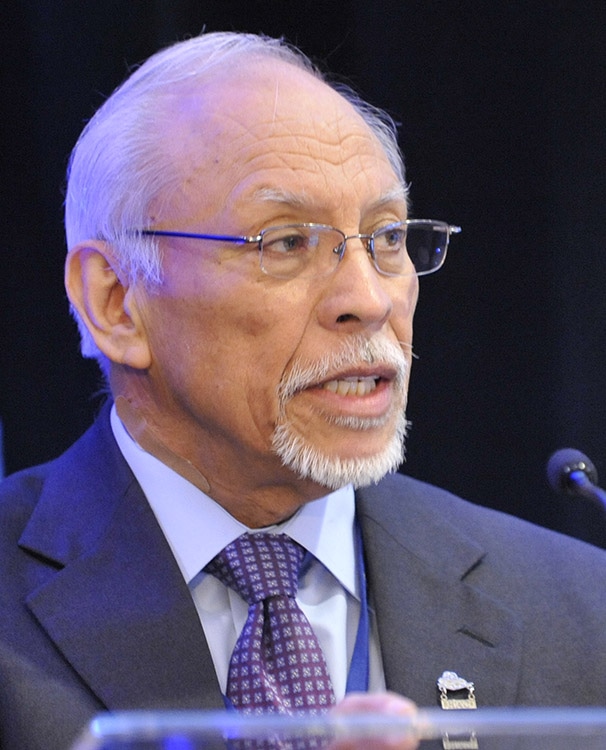The omnibus spending bill for FY17, announced on May 1, provides full funding for USDA and HUD housing programs. It rejects the cuts in these programs proposed by the Trump Administration.
For many programs of both USDA RD and HUD, the omnibus includes the highest amount from the bills considered in the House or Senate last year. Some programs – such as USDA’s Section 542 vouchers and HUD’s Lead Hazard Reduction – receive more than last year’s bills would have provided.
The omnibus will be considered by the House Rules Committee on Tuesday, May 2. The committee is expected to recommend passage by the full House. The House floor vote may happen as early as Wednesday. Then the bill will go to the Senate. Under the Continuing Resolution currently in effect, both houses of Congress must pass the bill and President Trump must sign it by midnight on Friday, May 5.
USDA Funding
The omnibus bill increases funding for both Section 502 direct loans and the Section 523 self-help program. It raises Section 515 to $35 million, higher than the FY16 appropriation and the amount requested in the Obama Administration’s budget, although not as high as the figure in the Senate’s FY17 bill.
Several of the omnibus’s provisions address the need for rental housing preservation and tenant protections. In addition to providing the $1.405 billion in Section 521 Rental Assistance funding requested by the Obama Administration, it also includes $19.4 million for Section 542 vouchers for tenants in properties with prepaid mortgages. It does not extend the voucher program to cover properties where mortgages matured, but it does require USDA to continue helping nonprofits and public housing authorities to preserve rental properties:
The Secretary shall implement provisions to provide incentives to nonprofit organizations and public housing authorities to facilitate the acquisition of Rural Housing Service (RHS) multifamily housing properties by such nonprofit organizations and public housing authorities that commit to keep such properties in the RHS multi-family housing program for a period of time as determined by the Secretary, with such incentives to include, but not be limited to, the following: allow such nonprofit entities and public housing authorities to earn a Return on Investment (ROI) on their own resources to include proceeds from low income housing tax credit syndication, own contributions, grants, and developer loans at favorable rates and terms, invested in a deal; and allow reimbursement of organizational costs associated with owner’s oversight of asset referred to as ‘‘Asset Management Fee’’ (AMF) of up to $7,500 per property (pp. 39-40).
The bill also directs USDA to “study effective means” to preserve properties with maturing mortgages to transfer Section 515 properties exiting the program due to mortgage maturity to qualified nonprofit organizations to preserve the properties in the Rural Housing Service multi-family program” (p. 113). Finally, it appropriates $1 million for technical assistance “to facilitate the acquisition of RHS multi-family housing properties in areas where the Secretary determines a risk of loss of affordable housing” (p. 113).
Finally, an Explanatory Statement accompanying the bill tells USDA to provide “a detailed analysis of the accuracy of the project-based forecasting tool used to estimate rental assistance needs” within 120 days after the bill is enacted (p. 20). [tdborder][/tdborder]
|
USDA Rural Dev. Prog.
(dollars in millions)
|
FY16
Approp.
|
FY17 Obama Budget Proposal
|
FY17 House Cmte. Bill (H.R. 5054)
|
FY17 Senate Cmte. Bill
(S. 2956)
|
FY17 Omnibus (H.R. 244)
|
|
502 Single Fam. Direct
Self-Help setaside
|
$900
5
|
$900
0
|
$1,000
5
|
$900
5
|
$1,000
5
|
|
502 Single Family Guar.
|
24,000
|
24,000
|
24,000
|
24,000
|
24,000
|
|
504 VLI Repair Loans
|
26.3
|
26.3
|
26.3
|
26.3
|
26.3
|
|
504 VLI Repair Grants
|
28.7
|
28.7
|
28.7
|
28.7
|
28.7
|
|
515 Rental Hsg. Direct Lns.
|
28.4
|
33.1
|
35
|
40
|
35
|
|
514 Farm Labor Hsg. Lns.
|
23.9
|
23.9
|
23.9
|
23.9
|
23.9
|
|
516 Farm Labor Hsg. Grts.
|
8.3
|
8.3
|
8.3
|
8.3
|
8.3
|
|
521 Rental Assistance
|
1,390
|
1,405
|
1,405
|
1,405
|
1,405
|
|
523 Self-Help TA
|
27.5
|
18.5
|
30
|
27.5
|
30
|
|
533 Hsg. Prsrv. Grants
|
3.5
|
0
|
5
|
3.5
|
5
|
|
538 Rental Hsg. Guar.
|
150
|
230
|
200
|
230
|
230
|
|
Rental Prsrv. Demo. (MPR)
|
22
|
19.4
|
22
|
22
|
22
|
|
542 Rural Hsg. Vouchers
|
15
|
18
|
18
|
18
|
19.4
|
|
Rural Cmnty. Dev’t Init.
|
4
|
4
|
4
|
4
|
4
|
HUD Funding
The omnibus provides full renewal funding for HUD programs, including CDBG, HOME, SHOP, which would have been eliminated by the Trump Administration’s proposal . It also includes $10 million for Section 202 that HUD can use either for new construction – the first such funding since 2011 – or for new Senior Preservation Rental Assistance Contracts (p. 1583 ).
|
HUD Program
(dollars in millions)
|
FY16
Approp.
|
FY17 Obama Budget Proposal
|
FY17 House Subcmte. Bill
|
FY17 Senate Cmte. Bill
(H.R. 2577)
|
FY17 Omnibus (H.R. 244)
|
|
Cmty. Devel. Fund
CDBG
|
$3,060
3,000
|
$2,880
2,800
|
$3,060
3,000
|
$3,000
3,000
|
$3,060
3,000
|
|
HOME
|
950
|
950
|
950
|
950
|
950
|
|
Self-Help Homeownshp. (SHOP)
|
10
|
10a
|
10
|
10
|
10
|
|
Tenant-Based Rental Assistance
VASH setaside
|
19,628
60
|
20,854
7c
|
20,189
7c
|
20,432
57
|
20,292
47d
|
|
Project-Based Rental Asstnce.
|
10,622
|
10,816
|
10,901
|
10,901
|
10,816
|
|
Public Hsg. Capital Fund
|
1,900
|
1,865
|
1,900
|
1,925
|
1,942
|
|
Public Hsg. Operating Fund
|
4,500
|
4,569
|
4,500
|
4,675
|
4,400
|
|
Choice Neighbrhd. Initiative
|
125
|
200
|
100
|
80
|
137.5
|
|
Native Amer. Hsg. Block Grant
|
650
|
700
|
655
|
647
|
654
|
|
Homeless Assistance Grantsb
|
2,250
|
2,664
|
2,487
|
2,330
|
2,383
|
|
Hsg. Opps. for Persons w/ AIDS
|
335
|
335
|
335
|
335
|
356
|
|
202 Hsg. for Elderly
|
432.7
|
505
|
505
|
505
|
502.4
|
|
811 Hsg. for Disabled
|
150.6
|
154
|
154
|
154
|
146.2
|
|
Fair Housing
|
65.3
|
70
|
65.3
|
65
|
65.3
|
|
Healthy Homes & Lead Haz. Cntl.
|
110
|
110
|
130
|
135
|
145
|
|
Housing Counseling
|
47
|
47
|
55
|
47
|
55
|
|
Local Housing Policy Grants
|
–
|
300
|
–
|
–
|
–
|
- The FY17 Obama Administration budget, like past budget requests, proposed to make SHOP a setaside in HOME.
- Includes the Rural Housing Stability Program, which is not yet operational.
- Tribal VASH setaside.
- $7 million for tribal VASH and $40 million for VASH.
|


 by Moises Loza, HAC’s Executive Director
by Moises Loza, HAC’s Executive Director

